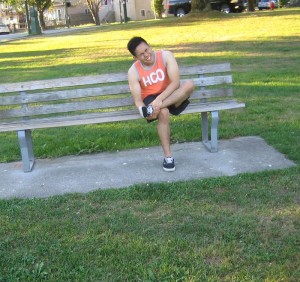Athlete’s foot is a fungal infection affecting the feet and commonly called as tinea pedis. This fungus thrives in warm and moist areas such as the area between the toes. Athlete’s foot causes itching and flaking of the affected skin. Men are more prone to this condition and people with weakened immune system. Even children can also be affected by this condition. The infection can be spread through direct contact with an infected individual such as sharing of personal belongings. Walking barefoot on surfaces that has been contaminated by the fungus has a high risk of developing these infections.
Symptoms of athlete’s foot
- Development of blisters in the affected area
- Burning sensation
- Itchiness between the toes
- Peeling of the skin
- The toenails become thick and discolored
- The soles of the feet and toes becomes dry
- Sometimes, fungal infections develop in the toenails.
Causes

- Excessive sweating
- Wearing closed shoes
- Minor injuries on the skin or nails
- The feet are wet for long periods of time
Treatment
- Take a bath regularly and use antifungal soap or cream on the affected area. Dry the area thoroughly after taking a bath or performing any exertions that causes the body to sweat. Dust the affected areas and other areas of the body that is prone to infection with antifungal powder.
- Avoid wearing closed shoes for long periods of time since it provides a suitable environment for dermatophytes. It is recommended to wear sandals or slippers. If there is a need to wear closed shoes, air out the feet from time to time and change socks frequently.
- Take the prescribed over-the-counter fungal medications that should be applied regularly and maintained for at least 3-6 weeks.
- Avoid strong detergents, floor cleaners and bleach to prevent damage on the skin and making the condition worse.
- Disinfect all clothing and personal items that comes in contact with the infected skin to prevent the spread of infections. Footwear should be dusted using anti-fungal powders and keep them in a well-ventilated and plenty of sunlight in drying them out.
- If the feet are sweating excessively, avoid wearing plastic or rubber shoes since they can trap moisture. Wear leather shoes that are made of natural material that makes the feet comfortable.
- Avoid sharing shoes with other people.
- Wear socks made of cotton and natural fibers since they prevent the accumulation of moisture. Change socks at least 2-3 times every day if engaging in sports activities and sweats excessively.
- Wash socks using hot water to eliminate spores of fungus.
- Wash hands properly when touching the infected areas.
- Always wear slippers when taking a bath in public shower rooms or locker rooms.
Other remedies
- Sprinkle some baking soda on the shoes to eliminate moisture.
- In a cup of water, add a cup vinegar and soak a cotton ball in the solution and apply it on the affected area. Another way is soaking the feet in the solution of warm water mixed with vinegar and soak the affected area for at least 20 minutes every day.
